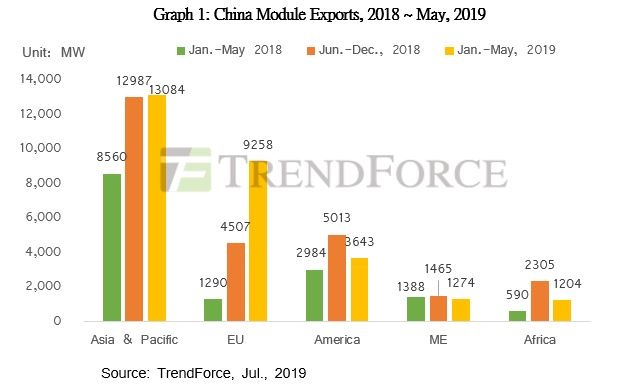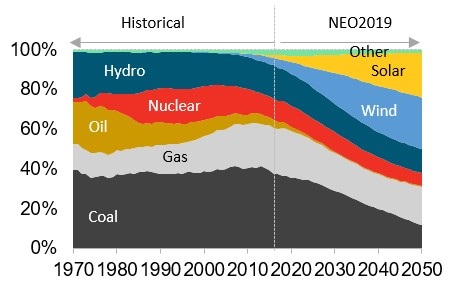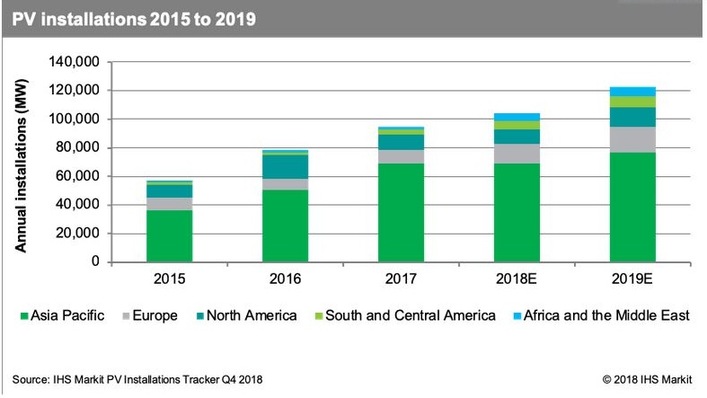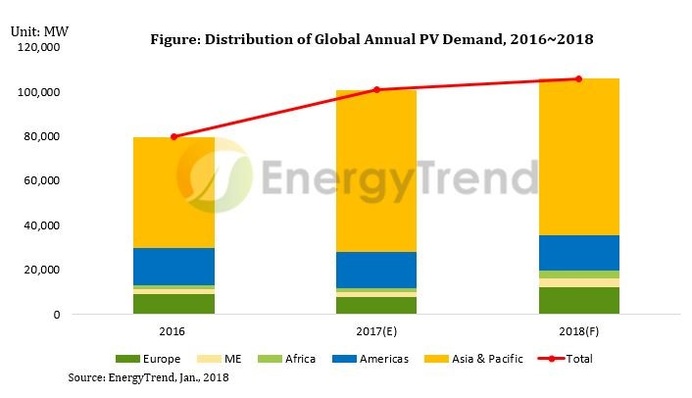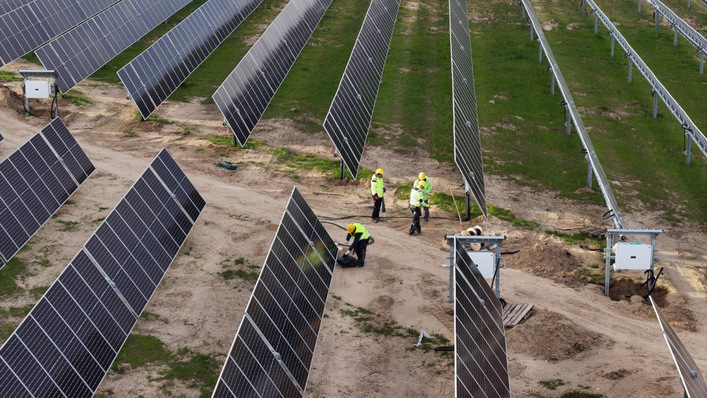Ever since China's 531 New Policy came into effect back in 2018, Chinese manufacturers impacted by the policy actively sought expansion overseas in order to lessen the risks from the policy. Adding that the distribution of global markets is becoming more diverse and dispersed, we see global demand for PV modules being pushed up as a result. EnergyTrend, gives the following outlook for 2H19: Clients will slightly reduce pull-ins for 3Q, but this is expected to be a temporary state of rest for the market, which may still see demand for the whole 2019 year rise above 120GW.
Chinese solar module exports nearly doubling
According to EnergyTrend's statistics, Chinese exports to overseas regions from January to May, 2019, came to a total of 28.5GW, nearly doubling YoY from a 14.68GW (before China's 531 New Policy; a 92.6% growth) for last year. After the New Policy came into effect, the exports from June to December in 2018 totaled 26.3GW. Judging from regional markets, Europe has been the spotlight region for this period.
New export channels in Europe through the removal of the MIP
Europe officially removed trade barriers against Chinese suppliers in September 3, 2018, allowing modules made in China to compete in free European markets, unhampered by any trade barriers. In 2H18 post-June and from January to May in 2019, Chinese module exports to European regions grew nearly every month, demonstrating that the removal of European Minimum Import Price (MIP) trade barriers opened up a new export channel for Chinese suppliers impacted by China's 531 New Policy.
Gigawatts markets growing to 21 in 2019
EnergyTrend predicts that global demand will become more and more dispersed in 2019, with GW-scale markets to increase from 16 in 2018 to 21 in 2019, mainly because markets are popping up all over the world. Aside from the five major markets, traditionally China, the US, India, Japan and Australia, there has been signs of revival in some European markets, old and new alike. The revival stemmed from the Paris Agreement, in which members of the EU continued to increase the proportion of renewable energy in an attempt to reduce carbon emissions. This brought module demand to rise from 11.9GW in 2018 to 21.8GW in 2019. The demand is expected to keep growing to 24GW in 2020, registering a growth of over 10%.
PV as a solution for emerging countries to solve energy shortages
Apart from European regions, South America, the Middle East, Africa and other emerging regions each have at least 2-3 countries with GW-scale markets. In fact, the Paris Agreement consists of Nationally Determined Contributions to renewable energy development by each member of the United Nations (UN). Thus besides the governmental subsidies and support each country provides, the annually dropping costs of PV installations of nowadays is turning PV into a solution that emerging countries may utilize to solve energy shortages and reduce their contribution towards global warming. (HCN)
Stay informed, get our free newsletter twice a week. Register here


